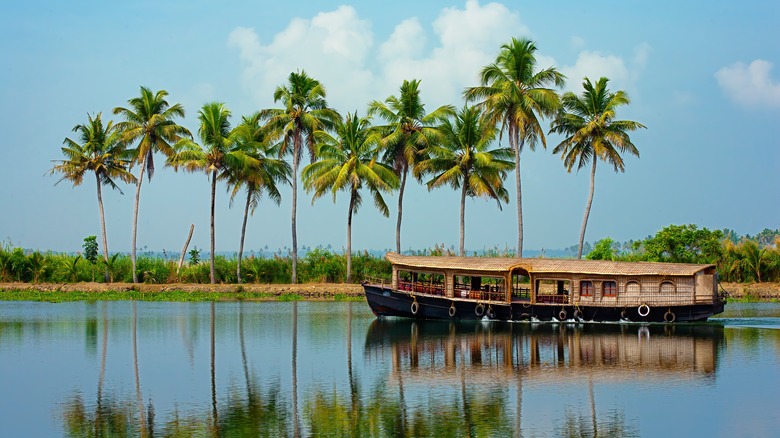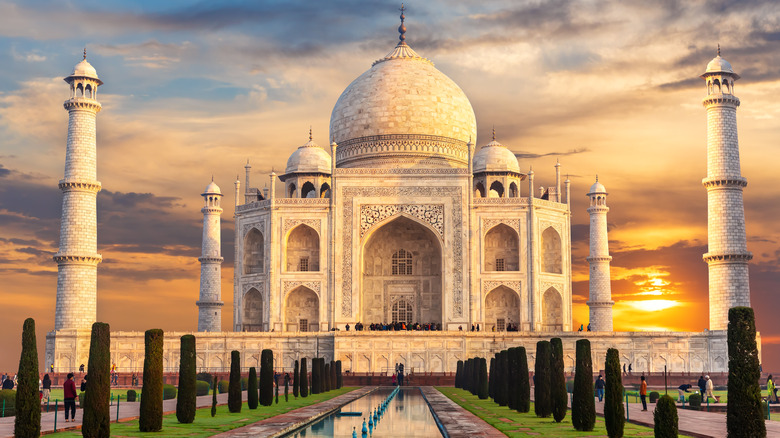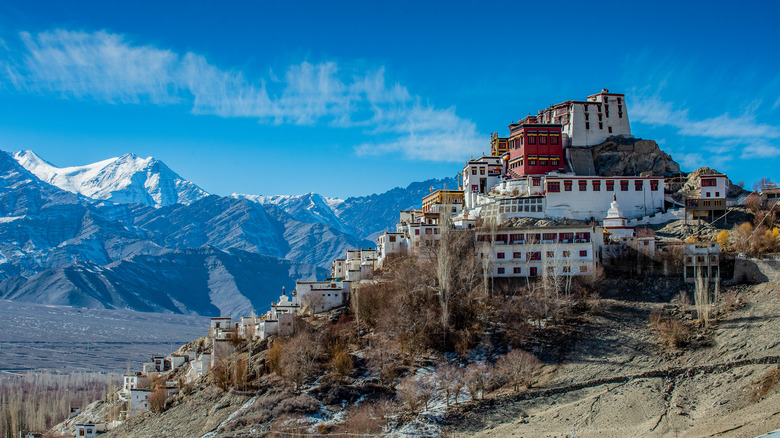The Best Time Of Year To Visit India
With a country the size of India, deciding when to visit can make or break your trip. From top to bottom, India measures approximately 1,997 miles, and includes the soaring peaks of the Himalayas, Goa's palm-fringed beaches, and the lush Keralan backwaters, so it should be no surprise that the weather conditions are extremely varied. The main feature of India's climate is its monsoon season, which begins in Kerala in May and works its way across the country, Rough Guides writes. Monsoon season is definitely not the best time to travel. However, it's not just climate that you should take into account when choosing when to visit India, though. Festivals happen year-round, and fluctuating prices might also play a part in your choice.
India's high season for travel is from November to March, according to India Some Day. These months tend to see the lowest rainfall, with clear, sunny days and pleasant temperatures. Rough Guides has more specific advice, recommending November or February, as December and January can be crowded with both domestic and international tourists. But this isn't the whole story. Let's look at the best times to visit some popular places in India.
Visiting India from November to March
If you're heading to India during peak season, you'll find pretty good weather all over the country. According to Intrepid, destinations from the Indian Himalaya in the north to Kerala in the south all experience their most favorable weather conditions during this time. Rough Guides notes that there can be a stark contrast between the temperatures in the north and the south, however. Delhi and the mountainous areas can be distinctly chilly, especially at night.
Another reason many visitors choose to travel to India in March is for the famous festival of Holi. Holi Festival writes that this is one of India's most revered and colorful festivals, and is celebrated in almost every part of India.
With the good weather come the crowds, and with the crowds, higher prices. Audley Travel warns that flight prices to India are often highest in December, while hotels can fill up in the beach towns of Kerala, so it's best to book early. If you want to save money, you might want to avoid this season altogether.
Visiting India outside of peak season
If you can't or don't want to travel to India between November and March, that doesn't mean you won't have a wonderful trip. Many sites, including Bookmundi, highlight October as a good month for travel, particularly in northern India, as the monsoon should have cleared by then. And what about summer? Audley Travel, along with most experts, states that visitors who arrive between June and September may want to stick to the hill stations of Ladakh, which are more easily accessible in the summer months.
April and May can be difficult months for visitors to India. Rough Guides explains that temperatures begin to climb across the country from late March, hitting highs of over 100 degrees Fahrenheit in Delhi in May and June, while Kerala and Goa experience high humidity and thunderstorms. This means that spring is not a very pleasant month for sightseeing. There are some major festivals during this time, though, including Buddha Jayanti (Gautama Buddha's Birthday) and Hanuman Jayanti (the birth of the monkey god), as Asia Highlights mentions. As India's peak tourist season is fairly broad, and the country tends to be reasonably priced for visitors, there's little reason to visit off-peak.


